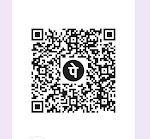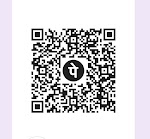Productivity is never an accident. It is always the result of a commitment to excellence, intelligent planning, and focused effort.” — Paul J. Meyer
I’m gonna start this post by sharing a story about Mark, and his efforts to become more productive at work.
Mark happens to be a good friend of mine. Mark worked as a Quality Analyst. He was one of the most disciplined and hardworking people in the office. However, ironically, Mark was also one of the few people in the organization who was consistently missing deadlines.
For someone who was so dedicated to his work, it was unclear what’s making Mark fall behind when compared to the other employees (in terms of productivity) who seemingly found time for other non-work related activities.
Mark was quite perplexed himself. He was working hard as he could to become more productive, but still, nothing worked for him. He was getting more and more frustrated with each passing day, which further affected his performance at work and personal well-being.
“I don’t know what I can do to get more done in less time?” said disgusted Mark to me as he wore a worried look on his face as we discussed this matter during a coffee break in our office.
“People have been spending less time than I have on the same work and yet they are able to deliver more. This is simply driving me nuts. The harder I work, the less productive I seem to get.” added Mark.
“Mark, you are working hard, it’s visible to everyone in the office, but are you also working smarter?” I asked him. Mark couldn’t find an answer.
“I don’t know if I am doing smart work. Honestly speaking, I have always found this term confusing. I mean either you do work or not, what’s this smart work all about?” Mark said to me in a kind of submissive tone.
He looked completely out of sorts. He realized there and then that perhaps he needs to change the way he works to deliver more goods in less time, without letting work-related stress and pressure get to him.
“Have you ever tried to change the way you work? Maybe prioritize and visualize your tasks a little better? Or, maybe keep track of time spent on doing work?” I asked Mark, and he just shrugged his shoulders.
I’m sure, by now, you would have understood the crux of the matter. It could very well be that most of you are facing the same problem that Mark has found himself in – putting in hard work but not getting the desired results in terms of productivity.
With this article, I hope to help fellow professionals achieve more in less time by making small yet significant changes to their work regimen. When followed and practiced earnestly, you would be amazed at the results.
Let’s move on to address the various disruptions at work and figure out the solutions to these problems one at a time.
Switch to ProofHub NOW and easily plan, collaborate, organize and deliver projects of all sizes, on time.
Table of Contents [show]
The Peskiest Productivity Problems & How To Solve Them All
#1 Prioritization – Focus On The Most Important Things First

This was the first thing I asked Mark, and this is the first strategy that I’m discussing and keeping it on the top here. Why? Simply because you should be doing tasks that are of utmost importance first if you want to be more productive at work. The less significant tasks can wait.
Problem:
Just like my friend Mark here, we too find ourselves giving the utmost importance to tasks that might be crucial but aren’t exactly urgent. This, truly, is a big problem.
Like Dwight Eisenhower once said, “What is important is seldom urgent and what is urgent is seldom important.”
According to a recent study, the average employee stays productive for less than three hours a day. If that is true, don’t you think it would be best to spend your limited productive moments on something that actually matters?
Solution:
As professionals, we are more focused on just doing instead of doing it right. You would’ve noticed that often, we are so focused on checking off the tasks on our to-do list that we end up confusing important tasks with high-priority tasks and vice versa. When looking to prioritize tasks, you can use the Eisenhower Matrix to categorize them as:
- Urgent And Important: Do these tasks as soon as possible.
- Urgent, But Not Important: You can delegate these tasks to others.
- Important, But Not Urgent: Schedule these tasks for later.
- Neither Urgent Nor Important: Remove them from your schedule ASAP.
The most productive people work on high-value tasks as well as delegate some of these tasks to the right people by giving them enough time and guidance. They recognize that they can’t get everything done.
#2 Track Time Spent On Doing Tasks
![]()
Tracking time does not only mean using automatic or manual timers to accurately record the time you spend on doing tasks. Rather, you should track time to check if some tasks are taking more than the expected time. You might be spending extra time on tasks that are supposed to be completed in less time, but you’re not aware of it.
Problem:
There are many distractions that we tend to overlook. These are too common and done way too many times through the day to be considered distractions, they seem like a part of our daily routine now. This has to stop. If you are wondering what activities I am referring to here, take a look at the two points below:
1. Office Gossip:
A recent survey revealed that about 15% of employees occasionally, and 21% of employees regularly engage in gossip.
Gossip can destroy an organization’s work culture and cut down on productivity. Even though it’s hard to not indulge in gossiping, it’s when a seemingly harmless chit-chat heightens to a time-waster at the workplace that hampers your productivity big time.
Workplace gossiping can have negative consequences in the form of lack of trust amongst employees, reduced productivity, rumors circulation, divisiveness, unexpected turnover, loss of great talent, to name a few. Surely, it can’t get any worse than that!
2. Mobile Phone Usage:
There are 5.15 billion unique mobile phone users in the world today, according to the latest data from GSMA Intelligence and 3.96 billion global users are using social media.
Smartphone usage statistics suggest that an average person spends about three hours a day on their mobile device. I know you are not supposed to throw your mobile phones out, but we can try to reduce their usage at work in a way that your work doesn’t take the backseat.
Solution:
Using efficient project management and team collaboration tool like ProofHub, with built-in time tracking software can help you know exactly how much time you spend on doing daily tasks, add multiple timesheets to record time data, set time estimates, and create custom time reports of people and projects all at one place.
Get bird’s eye view of all time data of people across all projects, billable or non-billable, project progress, and status in bird’s eye view without the need to jump through projects. You will be able to identify tasks that are taking more time as well as make people in your company more accountable for their actions.
#3 Mending The Work Culture

Problem:
There are employees who need to express their stress and insecurities of work and their personal lives and the only way they know how to do that is by putting their thoughts into words. This results in gossiping and unwarranted talking.
According to a new poll by Udemy and Toluna, 80% of people report being distracted by chatty coworkers, the number one office place distraction. At the same time, another recent survey revealed that about 15% of employees occasionally, and 21% of employees regularly engage in gossip.
Unnecessarily loud coworkers and noisy offices are reported to be the second most cited workplace disturbance. All these factors can have a massive impact on your productivity. To make matters worse, open-office floor plans and shared office spaces often exacerbate this issue.
To many people, the sounds of conversations, laughter, ringing mobile phones, closing-opening of drawers and doors, etc, might seem normal. However, researchers have termed such noises as distractions, which do not let you focus properly on the task at hand.
Solution:
The solution to this problem involves a lot of steps. However, the good news is that these are easy steps, which once followed, can show you some very impactful results.
The problem here is a broken work culture. So let us start mending this work culture, or rather, team culture by doing the following:
- Give them a reason to look forward to their day at the job. Make giving appreciation, organizing team events, and team celebrations a regular thing.
- Celebrate every success and celebrate every employee for every step they take in the right direction.
- Award employees with some special incentives that will help you appreciate their efforts without breaking the bank.
- Provide them with communication tools so they can turn their unintentional attempts at distractions into carefully drafted messages.
Also Read:
Try ProofHub for FREE to experience effortless collaboration within and across teams.
#4 Find An Alternative To Meetings

In the US alone, more than 25 million meetings are held every day and more than $37 billion is spent on unproductive meetings. 15% of an organization’s time is spent in meetings.
Problem:
It can be said with affirmation that not all meetings are productive. You might have been a part of a meeting this week, which turned out to be no more than a huge time-sucker. Precious time is lost because people are asked to pause their work and attend a meeting for an hour or so, of which they need not be a part of.
In addition to that, we all can agree that meetings without agendas might as well be a chat in the park. These sorts of meetings just add to the non-productive time spent in useless activities. Let’s discuss how we can utilize the time spent in these meetings more fruitfully.
Solution:
Collaboration tools such as ProofHub can be an amazing alternative to meetings. However, you might be thinking, is there an alternative for face-to-face communication? Well, yes, there is. As I mentioned before, tools such as ProofHub come with countless outlets for communication that can help your teams collaborate better. For instance, the tool in question comes with features such as:
- Instant messaging: Productivity is one step closer when people get to make conversation instantly. This feature makes group chats possible.
- Discussions: It will help you conduct elaborate virtual discussions where you will get to actively document ideas, brainstorming sessions, and the undertaking of some very important decisions.
- Notes: This feature will help you record both dynamic and static information that acts as a base for all your projects and tasks. This will be a great platform to build a company wiki.
- Kanban boards: With Kanban boards, you might as well forget the reasons for having a meeting. These boards provide you with a platform to provide as much information as the assignee could ask for and help you track progress at every step of the way.
Further reading: 5 Tips to Running the Most Effective Team Meetings
#5 Take Good Care Of Yourself

Problem:
Over half of workers in the United States have trouble eating healthy on the job, according to a survey published Tuesday by the American Heart Association.
What you eat has a direct effect on the way you feel and work throughout the day. It’s difficult to work when you’re hungry, but satisfying your cravings with junk does little more than instant gratification. Nutrition is extremely important for cognition and focus.
The WHO reports that “adequate nutrition can raise your productivity levels by 20% on average.” Say no to sugary, processed foods and drinks because these will provide you with a sudden boost of energy followed by crashes. Sugars and carbs are not enough to create a steady supply of glucose.
Solution:
You need to consider healthier options that will remove your hunger as well as keep you focused and energized throughout the day. Stick to foods rich in protein, fiber, healthy fats, and complex carbs to maintain a high energy level at work.
You can’t be at your productive best unless you are in the best shape, both mentally and physically. Being productive does not mean working to the point of burning out yourself. It’s about creating a fine work-life balance that you should master.
Do you know what highly productive people never miss out on? It’s their physical and mental health. They give their well-being the foremost priority. They rejuvenate, recharge themselves by taking short breaks from work at regular intervals. They don’t let work overlap personal space.
They eat healthy food, exercise regularly, actively participate in non-work-related activities, and go out on weekend trips just to keep their minds and bodies in the best possible shape.
#6 Realign The Way In Which You Manage Time

As Abraham Lincoln famously said, “ Give me six hours to chop down a tree and I will spend the first four sharpening the axe.” The lesson behind this quote is unquestionably clear – If you want to be productive, you need to add new skills, learn new things, and improve on your current set of skills.
Problem:
I don’t know about you but I often find myself feeling retired and uninspired when I am not working on myself. The undeniable fact is that there is always room for improvement, and as humans, we are nothing if not works in progress. No matter how many deadlines we meet in a month, we will always feel demotivated till we see some substantial improvement in our professional and personal selves.
Solution:
There are many ways to be even better at what you do than you are right now. You can read, take coaching, seek the guidance of seasoned pros of your trade, identify your weaknesses, and work out how you can iron out these flaws. Stay updated with the latest trends and practices in your industry to stay well-informed.
Sharpening the axe means to keep working on your strengths and weaknesses to achieve high levels of efficiency at work. Dedicate time to improvement and your responsiveness to a variety of situations will significantly improve.
Get ready for an easy ride to effective time management with ProofHub to help you always stay ahead of schedule. Try now for FREE.
#7 Take Active Steps To Avoid Multitasking

Some researchers suggest that multitasking can actually reduce productivity by as much as 40%.
Problem:
A lot of people at work think that by trying to do too many things at a time, they would be able to achieve more productivity in less time. Moreover, most of us think that by multitasking, we would be able to impress our bosses or managers, but the reality is the exact opposite.
Unless you belong to that pool of exceptionally talented 2.5 % of people who are good at multitasking, there are good chances that your performance will take a backseat. Quickly switching your attention and focus from one task to another can cause mental blocks that can slow you down.
You can compare multitasking at work with texting while you drive. You are not able to concentrate properly on any of the two at a time because your attention is divided. Your workplace task juggling may be less dangerous, but has the same effect of slowing you down.
Solution:
In a modern-day working environment, it’s so easy to fall for the temptation of multitasking, but don’t do that. Most, if not all, people are not good at it and it adversely impacts your work quality, concentration, focus, and reasoning capabilities. Rather, make a habit of committing to a task at hand.
When you try to multitask, you are quickly switching your focus between two things. Every time you switch, you shift your focus and take some time to get up to speed on a new task. Your concentration and flow are continuously hindered due to having to switch between tasks.
There are many ways to avoid multitasking, like:
- Don’t undertake tasks that you can’t handle
- Set a time for distractions (checking social media, casual conversations, etc.)
- List your priorities
- Don’t be afraid to say NO
- Focus on a single task
- Keep your workspace decluttered and organized
- Use apps to block distractions
#8 Steer Clear Of Micromanagement

While not being able to prioritize tasks and indulging in distractions might be a major cause for falling levels of productivity, there is one more thing that makes teams less efficient and it all stems from micromanagement.
Problem:
Micromanagement is a serious condition where a boss cannot let loose a sliver of control to their team. This can potentially harm your whole operation. The need for control can make you overbearing and tough to work with.
It gives the team the expression that you don’t trust them enough with the task at hand. This lowers morale in more ways than one and, ultimately, people may end up feeling unproductive and restless.
Solution:
You don’t need to handle everything at once. Don’t be so hard on yourself. Take it one task at a time rather than looking at the enormity of the project. One of the most impactful world leaders, President Obama, said in a recent interview that the best leaders are those who know that they cannot achieve anything alone. This should be an eye-opener for bosses who choose to take everything into their own hands and cannot trust their employees enough to carry their assigned tasks.
Learn to let go of control. Learn to trust your team. Leave them to do their jobs, one task at a time. Remember, you got this, your team has got this.
Prioritize and assign tasks and subtasks to the right people, set deadlines, and track their progress to ensure that your project stays on track and gets completed on time. Task management enables teams to collaborate and coordinate among themselves to efficiently and effectively perform tasks and eventually complete projects.
By doing so, you ensure a clear distribution of work responsibilities among team members, without any confusion and delays. You can see work moving through multiple stages on Kanban boards and the Gantt chart allows you to easily adjust your plans as work changes and deadlines shift.
Break the tasks into smaller chunks and learn to delegate smartly. Taking action is the biggest source of motivation. Try to use every tool in your possession to turn every member of your team into their most productive selves.















0 Comments